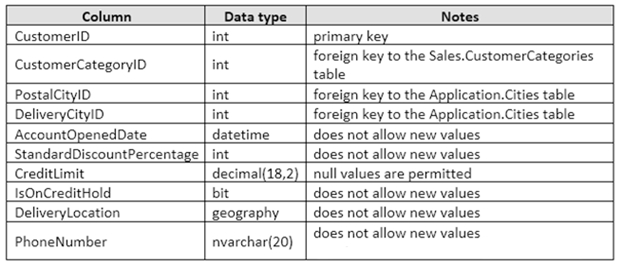

Note: This question is part of a series of questions that present the same scenario. Each question in the series contains a unique solution that might meet the stated goals. Some question sets might have more than one correct solution, while others might not have a correct solution.
After you answer a question in this section. You will NOT be able to return to it. As a result, these questions will not appear in the review screen.
You have a database that tracks orders and deliveries for customers in North America. The database contains the following tables:
Sales.Customers -
Application.Cities -
Sales.CustomerCategories -
Your company is developing a new social application that connects customers to each other based on the distance between their delivery locations.
You need to write a query that returns the nearest customer.
Solution: You run the following Transact-SQL statement:
The variable @custID is set to a valid customer.
Does the solution meet the goal?
mlourinho
Highly Voted 5 years, 7 months agoNew_user
5 years, 6 months agoflashed
5 years, 4 months agoflashed
5 years, 4 months agoanonimdom
5 years, 5 months agoAghie
4 years, 10 months agoBillybob0604
Most Recent 4 years, 5 months ago